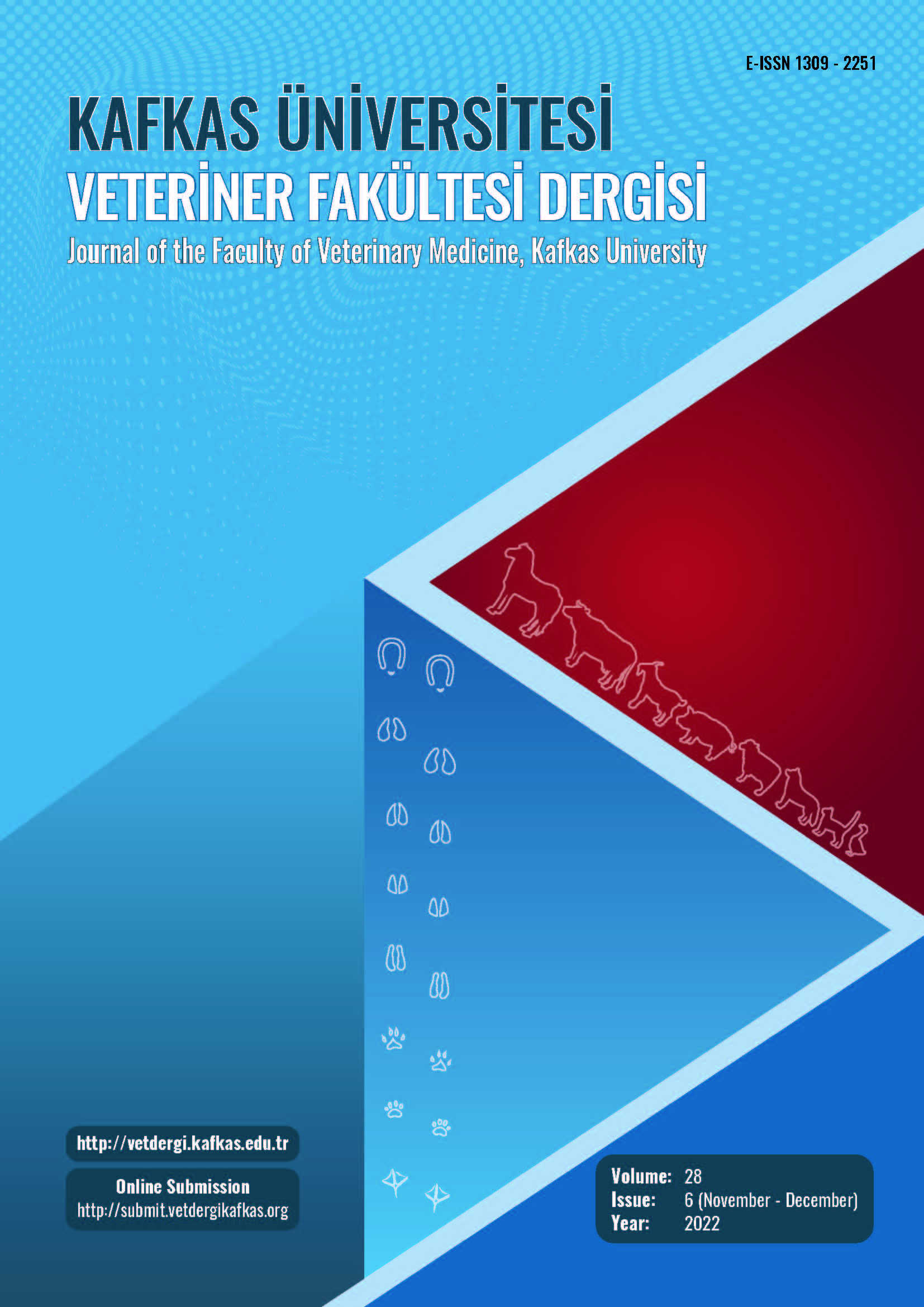
This journal is licensed under a Creative Commons Attribution-NonCommercial 4.0 International License
Kafkas Üniversitesi Veteriner Fakültesi Dergisi
2022 , Vol 28 , Issue 6
Associations Between MSTN/HaeIII Polymorphism and Reproductive and Growth Characteristics in Morkaraman Sheep
1Department of Animal Science, Faculty of Agriculture, Ataturk University, TR-25240 Erzurum - TÜRKİYE
DOI :
10.9775/kvfd.2022.27952
The myostatin gene inhibits skeletal muscle growth in advanced animals, and a mutation in the gene coding region increases
muscle formation. Hence, it is accepted to be a candidate gene for the selection of some production traits. The objective of the current
research was to examine the genotypes of the myostatin gene and reveal the associations between the genotypes and a number of traits,
including birth weight, weaning weight, weaning age, average daily weight gain, and productivity, in 110 Morkaraman sheep. Genotypes
were determined by the PCR-RFLP method using the HaeIII restriction enzyme, and the genotype frequencies were found to be 9%, 69%,
and 22% for MM, Mm, and mm in the myostatin locus, respectively. The M allele frequency was 44%, whereas the m allele frequency
was 56%. In the studied population, the myostatin locus was not in Hardy-Weinberg equilibrium. The association analysis revealed no
statistically significant impact of the MSTN gene polymorphism in exon 3 on birth weight, weaning weight, and productivity (P>0.05) but
found a significant effect on weaning age and average daily weight gain (P<0.05). As a result, the MSTN gene showed polymorphisms in
Morkaraman sheep and can be regarded as a genetic marker for sheep selection according to the association analysis results.
Keywords :
MSTN gene, Polymorphism, Morkaraman, PCR-RFLP, Production traits










